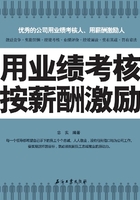THE RULES OF CHANGE
Thomas Kuhn, the philosopher of science who wrote The Structure of Scientific Revolutions, showed that science develops through surprising transformations.[1] Kuhn says that science, rather than being a slow evolutionary process, moves in dramatic leaps from one basic paradigm to another. These quantum leaps in science are something like regime changes in politics: they are disruptive and radical.
Kuhn says there are two ways to do science. In most periods, scientists play by the rules of normal science. They accept the reigning theoretical paradigm and try to solve the small puzzles yet to be resolved. But over time, inexplicable contradictions—Kuhn calls them "anomalies"—begin to accumulate. A few brave scientists question whether the reigning paradigm can explain the contradictions and embark on a heretical quest to topple it and construct a new paradigm. In the process, they move beyond normal science, a shift from defending and patching up the old order to creating a new one. A Newton or an Einstein eventually emerges and proposes a revolutionary theory. A growing number of radical scientists embrace it and work to establish it as a new regime.[2]
Politics is no science. But like normal science, there is the game of normal politics: Republicans played it through most of the New Deal and Democrats have been playing it ever since FDR died. When you play the game of normal politics, you treat the big questions as settled, making most political contests about small matters that do not shake the regime and do not change the lives of ordinary Americans.
But politicians sometimes become paradigm-breakers. During the 1930s, the Democrats were regime changers and in the 1970s and 1980s insurgent Republicans were the quantum leapers. New Dealers during the Depression and New Rightists at the opening of the Reagan Revolution made politics a more "out of the box" game than in normal eras. Even couch potatoes got inspired—they may have listened to FDR's fireside chats on their couch, but they were really paying attention and promising to work with the president to change the country!
In this chapter, I describe the rules of regime-change politics. I draw on examples from the New Dealers and the New Rightists. They are the two masters of the regime change game in the twentieth centur.y
NAME THEIR GAME: NORMAL POLITICS OR REGIME CHANGE?
Franklin Roosevelt
Ronald Reagan
George Bush, Sr.
Bill Clinton
Al Gore
George W. Bush
Howard Dean
John Kerry
Dennis Kucinich
Ralph Nader
See the answers at the end of this chapter. Expect some surprises!
RULE 1: EMBRACE DEFEAT
It's hard enough to accept defeat, let alone enthusiastically embrace it! But this is precisely what the New Righters did in 1964, when President Johnson crushed Arizona Republican Senator Barry Goldwater in a landslide. Goldwater had rejected the normal politics of Eisenhower Republicans in the 1950s and campaigned on a radical platform to overthrow the New Deal regime (well, he didn't quite put it that way but that's what he wanted to do). It was a premature strategy and Johnson flattened Goldwater like a pancake in one of the biggest Democratic victories of all time. The genius of the New Right—and particularly of the grassroots antitax organizers and activist evangelical preachers in the South and West—was to reject conventional wisdom about Goldwater's humiliating defeat, refusing to skulk back to normal politics. Instead, they embraced this big loser as a hero and saw in his candidacy the route to regime change in the decade to come. Democrats, take note!
The Goldwater loyalists, sensing the vulnerabilities of the New Deal regime, saw that Goldwater had aroused a new constituency in the Bible Belt that could revolutionize the country. While Goldwater suffered a catastrophic national defeat, he had won all the deep South states, largely because the Democrats passed major civil rights legislation. Goldwater thereby both inherited and created a situation for a major political realignment, a sea change central to regime change today. The New Deal regime had been based on the coalition between the historically rock-solid Democratic South and the new industrial labor base in the Midwest. By winning the South, Goldwater shattered the political foundation of the New Deal and opened the path to the emergent coalition between Wall Street, Southwest military and energy corporations, and Southern religious fundamentalists that would become the base of the Reagan-Bush new regime.[3]
While the Republican establishment still hewed to a more mainstream conservative path in the candidacy of Richard Nixon, the New Right activists, ignited by the Goldwater campaign, shifted to regime-change politics and gradually infiltrated the Republican Party at the base. Their eventual success led to the Reagan Revolution and today's regime. In the process, they created a historic political realignment that we desperately need again today.
RULE 2: PLAY OFFENSE, THINK BIG
BIG-TH INKING REPUBLICANS: SMALL-THINKING DEMOCRATS
In normal politics, the rule is to think small and play defense. It's an understandable strategy on the Boston highways and in many marriages, and it's the standard approach in most political eras. Since the regime is well established and parties seek to contest the White House without changing regimes, politics is about small ideas. With big ideas out of play, parties play defense by moving to the center and politics loses its intellectual interest; it becomes entertainment, about personalities and partisan horse races.
Paradoxically, thinking small and playing defense have been embraced by the Democratic leadership for most of the last few decades, while the Bush Republicans are doing the opposite, playing offense as they seek to push the envelope of the current corporate regime. This is a dramatic historical reversal of roles, with the party that should be challenging the regime playing normal politics and those running the regime exploiting a cardinal rule of regime change. The Bush Republicans are still following Goldwater, most famously remembered for his phrase: "Extremism in the pursuit of liberty is no vice." The 1970s brash New Rightists, still in power today and still pushing big ideas, happily embraced extremism from the beginning, forming new corporate-funded foundations and journals and filling them with radical ideas. Some of their big (and mostly very bad) ideas, many of which they have now accomplished, are:
Privatize Medicare
Privatize Social Security
Deregulate the mass media
Vouchers for private schools
Home schooling
Abolish the estate tax
Institute the flat tax
Abolish taxes on corporate dividends
Eliminate most environmental regulations
Eliminate unions
Ban abortion
Eliminate state-church separation
Roll back gay rights
Abolish the United Nations
Abolish the federal government (except the Pentagon and corporate welfare)
There was nothing modest or centrist in the thinking of these activist conservatives, nor of the Reagan Administration itself, whose intent was to dismantle the New Deal once and for all while destroying the Soviet "Evil Empire." Today the neoconservatives, now the leading lights of the Bush Administration, are still not playing normal politics, and still winning by refusing to move to the center and think small.
BIG-THINKING DEMOCRATS: SMALL-THINKING REPUBLICANS
The New Dealers were also thinking big in the 1930s. Franklin D. Roosevelt knew it was no time for normal politics. In the Roaring Twenties, big ideas about laissez-faire, corporate self-regulation, and corporate paternalism had become deeply entrenched in the mainstream. By 1936, Roosevelt had attacked all these ideas, willing to risk the label of class warfare that intimidates Democrats in eras of normal politics. Roosevelt became the first president ever to launch a European-style social democracy in America, and his raft of new ideas saved capitalism but only by radically changing the political conversation. His regime-changing ideas—normal politics in Europe but almost revolutionary in the United States—inspired the most important legislation of the twentieth century:
Create Social Security (Social Security Act)
Legalize unions and collective bargaining (Wagner Act)
Create government programs to employ millions of jobless workers (Public Works Administration, Emergency Relief Appropriations Act)
Strictly regulate banking and Wall Street (Glass-Steagall Act)
Break up big utilities and other big holding companies (Holding Company Act)
Create public utilities (Rural Electrification Act)[4]
Some of these ideas may seem quite pedestrian today, but after the Hooverist "hands off" philosophy of the Roaring Twenties regime, they were mind-bending. The rich attacked it as socialism, but workers all over America found that politics finally meant something: a job, a voice, a little respect. These laws created the American middle class. No wonder so many people cried openly when they heard of FDR's death. Roosevelt turned the government from a handmaiden of the corporation into a countervailing power of and by the people, prepared to challenge business on key issues, including constitutional ones. Roosevelt's willingness to "pack the court" to shift the constitutionalism of the Gilded Age and the Roaring Twenties makes clear that FDR had rejected the politics of defense and small ideas.
Throughout the four terms of FDR, the Democratic Party played offense, seeking to reverse the legacy of two prior corporate regimes. This was the only time that the Democratic Party has ever embraced militant regime-change politics and it produced the only sustained period of Democratic ascendancy in American history. Shouldn't the Democratic Party leaders today be forced to repeat this lesson ten times at breakfast, ten times at lunch, ten times at dinner, and a hundred times before going to bed?
WHEN THE DEMOCRATS STOPPED THINKING BIG
The New Deal declined partly because Roosevelt's successors did not continue the spirit of thinking big that Roosevelt himself pioneered. Despite Democratic Congressional majorities in the 1950s, 1960s, and 1970s, they did not pursue the ambitious social goals that FDR himself might have embraced. The Democrats didn't try to build or democratize the labor movement. They didn't pass universal health care and they didn't attack corporate power. They bought into the Cold War and—with the very important exception of major civil rights legislation, a genuine advance of New Deal "big thinking"—mainstream Democrats turned against the Left in the 1960s, as it was pushing for participatory democracy and social justice at home and peace and human rights in foreign policy—precisely what the Democratic Party should have been doing. As corporate historian Ted Nace put it, "Franklin Roosevelt introduced notions of social democracy into American politics, but his successors dropped the ball."[5]
Thinking big and going on the offense is necessary both to create regime change and sustain the regime over the long term. Admittedly, it is easier for Republicans to get major funding for their visionary ideas and politics, and Democratic visionaries have had to run their institutes, magazines, and organizations on a shoestring. Democrats get corporate funding when they play the regime's game and play the role of incremental reformers or the "loyal opposition." This explains the seductions of thinking small for the Democratic establishment, but it doesn't make it a good idea—in fact, it's criminal that the Democrats have prostituted themselves to their own corporate patrons. If it wants to win elections, the Democratic Party has to find other ways to spread the big ideas it needs. Fortunately, the rise of the Internet as an inexpensive way to reach millions of people with bold new ideas, and raising small contributions, as Howard Dean did from large numbers of "little people," suggest there are new ways for Democrats to think big and play offense.
Ironically, in the last quarter century, the Democratic Party has remained in the defense mode and small ideas of normal politics, at the very historic moment when conditions are emerging for new big ideas and regime change. Of course, unlike big-thinking activist leftists, the New Rightists are well funded for creating and promoting their radical ideas, and their political efficacy lies not just in the "bigness" of their ideas but in the twenty-four-hour cable media exposure and enormous financial backing they get. The New Right is a triumph of both big ideas and big money.
RULE 3: MAKE YOUR PARTY A SOCIAL MOVEMENT
Most of us like parties, but we tend to stay home when it comes to the big political parties these days. How many party caucuses or conventions have you been to? In normal politics, parties are establishments of professional politicians, not a home for ordinary citizens. Politics becomes a spectator sport for all but the political class. Citizens keep their distance from the parties because they are stifling bureaucracies with little to offer ordinary people.
REVOLT OF THE BIBLE BELT
In regime-change politics, new grassroots groups force themselves onto the political scene and penetrate the bureaucracy of the parties. The second phrase of Goldwater's famous declaration about extremism was that "Moderation in the pursuit of justice is no virtue." This sounds more like a social movement credo than a political party platform. The New Right of the 1970s was very much a social movement of fìre-and-brimstone Bible Belt preachers tied to an insurgent class of grassroots Southern conservative workers, gun owners, religious fundamentalists, brilliant New Right policy wonks, and political organizers (such as the direct-mail expert Richard Viguerie, and Paul Weyrich, a founder of the Moral Majority). In addition, a major new movement of Fortune 500 and Wall Street corporate elites, who organized themselves to help dig the final grave of the New Deal and create a new corporate regime, led and financed this new regime-change politics.
The New Right learned the tools of regime-change activism in Goldwater's campaign. Here's how one New Rightist described it:
It was learning how to act: how letters got written, how doors got knocked on, how co-workers could be won over on the coffee break, how to print a bumper sticker and how to pry one off with a razor blade…. How to talk to a reporter, how to picket, and how, if need be, to infiltrate—how to make the anger boiling inside you ennobling, productive, powerful, instead of embittering."[6]
Doesn't this sound like social activism to you? It was exactly what I was learning as a civil rights activist in Mississippi at about the same time.
The religious-based New Right movement deserves special attention because it is the origin of the "red state" activism that still fuels some of the most potent grassroots organizing in the nation—and represents the melding of economic and moral politics essential to regime change. For decades, the New Deal Democrats could count on ordinary Southerners, despite their social and religious conservatism, as the regime's most reliable voting base. But in the late 1960s and 1970s, as corporate globalization began to threaten U.S. jobs throughout the nation, the New Deal Democrats wounded themselves mortally, failing to take the extraordinary steps necessary to protect the economic and social security of ordinary Americans. The creation of a new "anxious class" of conservative Southern and heartland workers was the beginning of the end of the New Deal regime.
As globalization threatened job security and wages, so too did the rising movement of civil rights and feminists who wanted their own place at the table. White workers, already deeply economically threatened, saw the New Deal liberals who backed these movements as betraying them. The cultural radicalism and antiwar activism of students and hippies enraged many of the new anxious class, especially white male workers, whose place in society was increasingly threatened not only by globalization, but by high technology and job competition from women and minorities. New Right organizers brilliantly seized the moment, realizing that a politics of standing up for God and country against liberal anti-Vietnam War activists could became part of the anxious class's way of redeeming its own wounded pride, and standing against affirmative action could become its way of protecting traditional white male privileges. The enemy was the 1960s liberals who had taken over the New Deal, aligned themselves with blacks and women, and were desecrating the traditional values and patriotism of America. The political solution: regime change that would restore America's great moral values and provide the place in America for hard-working patriotic Americans who played by the old rules.
The Christian New Right grassroots groups soon began to cross paths and cross-fertilize the thinking of more established regime-change conservatives inside the Nixon and Ford Administration's, including Donald Rumsfeld, Paul Wolfowitz, and Dick Cheney, as well as with the corporate elites on Wall Street. The Christian preachers fired up a new Republican populist base in the churches of the South; the political organizers linked them in a new nationally coordinated and corporate-funded movement for change in Washington; and the policy wonks and intellectuals created the big neoconservative vision[7] to guide the movement and link it securely to the interests of the corporate and military establishment—as well as to the moral values and resentments of the new anxious class in the heartland.
THE SOCIAL MOVEMENT OF THE BOSSES
The New Right social activists would have been a footnote in history without the regime-change campaign from the boardrooms. By the early 1970s, business had concluded that its relative weakness since the Roosevelt era meant that it was finally time to counter-attack to end the New Deal. The influential corporate attorney Lewis Powell, later appointed to be a Supreme Court justice by Richard Nixon, wrote a memo to the national U.S. Chamber of Commerce in 1971 saying that "As every business executive knows, few elements of American society today have as little influence in government as American business. …The business executive is truly ‘the forgotten man.’" At 1974 and 1975 meetings of corporate leaders sponsored by the New York Conference Board, one participant continued this theme, saying "At this rate business can soon expect support from the environmentalists. We can get them to put the corporation on the endangered species list."[8]
A full-scale corporate campaign began in the early 1970s, brilliantly chronicled by corporate historian Ted Nace, who dubbed it "The Revolt of the Bosses." It proves the critical point that social movements for regime change can arise among elites as well as the grassroots. "Corporations of the World, Unite!" shows some of the critical launching phases of the corporate social movement, which could be called "Justice for Billionaires"!
If you didn't think corporations could become a social movement, think again! Corporations, working individually and through trade associations, began networking into numerous coalitions for specific legislation and ideological campaigns, whether for deregulation or against "global warming" initiatives. Corporations such as Enron joined scores of such coalitions, including Americans for Fair Taxation, Business Council for Sustainable Energy, Direct Access Alliance, and many others promoting procorporate aims.[9]
The New Right regime change reflected the orchestrated efforts of America's biggest corporations, who understood, as Powell put in his Chamber of Commerce memo, that "The day is long past when the chief executive officer of a major corporation discharges his responsibility by maintaining a satisfactory growth of profits. … If our system is to survive, top management must be equally concerned with protecting and preserving the system itself."[10] The transformation of big corporations into a social movement was the key to regime change, and turned the Republican Party itself into a movement fueled by the money contributed by the big companies as well as the Bible Belt tele-preachers. The hidden power here was the synergy of corporate funding and grassroots moral anxiety and resentment, blended into a magically powerful economic and moral movement.
CORPORATIONS OF THE WORLD, UNITE!
1972?CEO Frederick Borch of General Electric and CEO John Harper of Alcoa formed the Business Round-table, an organization made up exclusively of CEOs from the biggest corporations of America.[11] The Busi-iness Roundtable became a forum for corporate coordination at the highest levels, lobbying for anti-union policies and procorporate tax, regulatory, and macroeconomic policies.
1972?Joseph Coors, the wealthy activist brewer, helped to found right-wing watering holes like the Heritage Foundation (originally the Analysis and Research Association). Along with the American Enterprise Institute, the Heritage Foundation is one of the most important of a new group of Washington-based conservative think tanks, policy institutes, political magazines, lobbies, and other bodies devoted to corporate regime change.
1973?Paul Weyrich, the New Right firebrand and tireless organizer, founded the American Legislative Exchange Council (ALEC) to lead conservative initiatives at the state level. ALEC originally was concerned with issues of abortion and school prayer but quickly evolved into a focus on corporate concerns as large companies began pouring money into the council. ALEC drafted bills such as the "Private Property Protection Act," and it helped business introduce more than 3,100 bills during 1999 and 2000 alone in state legislatures.
The movement flourished because of the vast money available, the commitment of the corporate elites, the extremely serious economic crisis created by stagflation, global competition, and military Keynesianism, and the insurgent New Right organizers' skill at exploiting new technologies and moral resentments. Viguerie was the mastermind of political direct mail that became a spectacular new tool of educating the grassroots and raising money. The Bible Belt preachers, such as Pat Robertson and Jerry Falwell, whom Viguerie and Weyrich helped persuade to get politically involved, used Christian television and electronic ministry as a remarkable new political apparatus, mixing fundamentalism and conservative populism to raise spectacular amounts of money for the cause. At the heart of it all was the construction of a new vision that—in one of the great triumphs of modern political propaganda discussed in Chapter 5—linked the interests of the world's largest corporations with the moral anxieties and resentments of U.S. workers that the corporations themselves were busy abandoning for cheaper labor abroad.[12]
As in most regime-change movements, the coalition between the religious grassroots base and the corporate Republican Party elites was not entirely comfortable on either side. The evangelicals suspected the Republicans and corporate elites were not fully in their corner on abortion, secularism, and other core social issues. The corporate elites and leaders of the Republican Party were eager to capitalize on the huge new political base of evangelicals, but were uneasy with some of the evangelicals' social and spiritual demands, which could be easily turned against the materialism of capitalism itself. Thus in many respects this was a marriage of convenience that required compromise by the grassroot zealots and zealous, sophisticated propaganda and political persuasion by the party elites.
The economic crises helped to cement a potentially shaky regime-changing coalition against the New Deal. The religious activists sought regime change for social and moral reasons; the corporations did so for economic aims. If the New Deal regime had still been economically stable, it might have been able to fight off the challenge of this potentially shaky coalition. But as severe stagflation and corporate flight undermined the ability of the New Deal to deliver and survive, the new coalition felt it had the wind at its back, sensing in its unity the prospect of victory, which it achieved in 1980 with Reagan's election. Despite the inherent tension in the alliance, which could ultimately lead to a split between corporations and the religious Right, it has survived thus far over the entire course of the third corporate regime, and has helped transform the country in a way that neither partner could have achieved on its own.
THE NEW DEAL AS A SOCIAL MOVEMENT
The same intoxicating brew of fiery new grassroots social movements and insurgent policy elites (but lacking the big money and organization of the corporate elites themselves) transformed the Democratic Party in the early 1930s. What were some of these movements?
Labor organizers, especially the CIO
Southern and Dust Bowl farmers and farmer unions
Miners, mill workers, and auto workers
Socialists
Communists
Veterans of World War I
Muckraking journalists
Wildcat strikers all over the country
Tenant organizers for the evicted and homeless
Welfare activists and relief workers
The unemployed
The New Deal regime change was the product of a dynamic interplay between militant grassroots activists and the Democratic Party. FDR was central, but regime change began with grassroots anger and activism against President Herbert Hoover after the 1929 market crash, who assumed the corporate regime could save itself and the country. Hoover's corporate friends, like John Ed-gerton, president of the National Association of Manufacturers, blamed the workers and unemployed for their own plight in the Depression, and agreed with him when he said in his presidential address in October 1930, that "if they do not… practice the habits of thrift and conservation, or if they gamble away their savings in the stock market or elsewhere, is our economic system, or government or industry to blame?"[13] The rise of angry popular revolts and movements against Hoover and his big-business allies helped elect FDR, who put into place as early as 1932 the beginnings of a regime-change agenda.
Hoover's unwillingness to change course and provide government relief after three years of Depression culminated in a series of popular uprisings in 1932 that laid the groundwork for regime change. One of the most important was the Veterans' Bonus movement, an organization of World War I veterans who had been promised but never paid a bonus for their service. In June 1932, they descended on Washington and set up a tent city, a ragtag group with placards that proclaimed "Cheered in '17, Jeered in '32." Some stayed on and squatted in unused government buildings. Hoover responded by using federal troops against the veterans, killing at least one and physically removing hundreds of them and their families. He authorized tear gas against their camps and torched their squatter homes. This created a huge public response, with the Washington News reporting "What a pitiful spectacle is that of the great American government, mightiest in the world, chasing unarmed men, women and children with army tanks."[14]
Heartland farmers faced with foreclosures in 1931 and 1932 responded with violence against banks, railroads, local governments, and corporate lawyers. Farmers in Iowa "blocked highways with logs and spiked telegraph poles, smashed windshields and headlights and punctured tires with their pitchforks."[15] In Nebraska, farmers carried signs saying "Be pickets or peasants."[16] Back in Iowa, things got even more intense when farmers almost lynched a lawyer seeking a foreclosure and several hundred other farmers attacked a sheriff and an agent of a mortgage company. "If we don't get beneficial service from the Legislature," said a leader of the Nebraska farmers, "200,000 of us are coming to Lincoln and we'll tear that new State Capitol Building to pieces."[17] A second version of "red-state" populism thus contributed to the end of the second corporate regime, just as the original red-state populists led the charge against the first one during the Gilded Age.
Revolts of striking and unemployed workers in mid-1932 contributed to a sense of a country near revolution. In southern Illinois, Communists led a militant demonstration of ten thousand striking miners in a "coal caravan." In Detroit, unemployed workers broke into grocery stores together and carted off food without paying. In Des Moines, a group of workers got on streetcars and told the conductors to "charge the fares to the mayor." And in a sign of the regime-threatening character of the revolt, jobless miners in Wyoming sank their own shafts on company property and "bootlegged" $ 100,000 of coal for themselves daily. As historian William Leuchtenberg notes, "When the owners went to court, juries in mining towns would not convict."[18]
The majority of Americans remained relatively passive, though their faith in government big business had clearly declined as more than 25 million Americans, one-third of the labor force, lost their jobs. But the social movement scared regime elites, who understood it could pave the way to a Democratic victory and erosion of corporate power. One financier, Rudolph Spreckels, wrote in 1932, "I am alarmed at the increasing undercurrent of hate directed against our bankers and big industrial leaders." He added, with a bit of hyperbole, "the word revolution is heard at every hand."[19]
The popular movements, combined with the banking crisis and the depth of the Depression, propelled FDR into the first phases of a regime-change Democratic politics. In spring 1933, in the first hundred days of his presidency, he passed the largest legislative reform package in American history. As New Deal historian William E. Leuchtenburg summarized it, FDR had "promised to distribute stupendous sums to millions of staple farmers; accepted responsibility for the welfare of millions of unemployed;… pledged billions of dollars to save homes and farms from foreclosure, undertaken huge public works spending; guaranteed the small bank deposits of the country; and had, for the first time, established federal regulation of Wall Street."[20]
At the same time, FDR and the Democrats were far from seeking or achieving full regime change. As is typically the case, the new leaders initially carried over much of the philosophy of the earlier regime. In 1933, FDR joined Hoover's crusade against government spending and slashed funds to veterans. Moreover, his 1933 National Recovery Administration regulatory scheme, known for the Blue Eagle insignia that symbolized a corporation's embrace of its own trade association's code of conduct, was rooted in the second corporate regime's idea of business self-regulation rather than public control. FDR was far from persuaded during these early years that he should offer state support for unions, something that was critical to regime change. In his first years, FDR remained committed to a government-business partnership heavily shaped by the earlier regime's vision of corporate self-government.[21]
The most important regime-changing element of FDR's first two years was his mobilization of popular hope rather than the legislation itself. Over half a million people wrote the president after his famous first inaugural speech, in which he declared that "the only thing we have to fear is fear itself." This mobilization of popular hope helped catalyze a second round of more militant populist grassroots activity, beginning in 1933, that moved the Democrats toward full-blown regime change in 1935 and 1936.
The charismatic miner John L. Lewis, supported by many socialists and Communists seeking a regime-changing labor movement, was the spark plug for the new social movement of industrial unions. In the summer of 1933, Lewis led an astonishing revival of the dying coal miners' union, adding more than 500,000 members to the 150,000 base membership of the United Mine Workers within a year. Lewis's success—partly generated by invoking FDR's magic name as a support of unions, a sign of the dialectic between the movements and the Democratic leadership—increased labor militancy around the country, leading in 1934 to some of the most radical labor activity in American history. This included demands for jobs, wages, welfare relief, unemployment benefits, union recognition, and even general strikes, backed up by dramatic acts:
Milwaukee streetcar workers assaulted transport stations and pulled out trolley poles, assisted by socialist groups of unemployed workers.
Striking Philadelphia cabbies burned one hundred taxis, leading fellow New York cabbies to drive 15,000 taxis out of service.
Iowa union electrical workers pulled a switch that plunged Des Moines into total darkness.
Copper miners in Butte, Montana, closed down the pits for months.
In Toledo, Ohio, members of the fledgling American Workers' party battled police and national guardsmen and threatened a general strike.
On Labor Day 1934, textile workers from Rhode Island and Massachusetts to the Carolinas launched the biggest single strike in American history, with pitched battles between strikers and soldiers in several states.[22]
All of this reflected the failure of the first hundred days to solve the urgent problems of millions of American workers and farmers who remained unemployed, bankrupt, or foreclosed. In 1934, nearly one-third of the workers attending the craft-based conservative American Federation of Labor (AFL) joined Lewis's crusade for a new, militant form of industry-wide organizing, leading eventually to a regime change in the labor movement itself: the creation of the Congress of Industrial Organizations (CIO). As the Depression deepened and labor militancy grew, new popular unrest grew in even more threatening forms, including the unruly Southern populism of Louisiana's Huey Long and the reactionary pseudopopulism of Father Charles Coughlin. These popular movements threatened the New Deal coalition and its ability to maintain electoral control and popular stability. The Democratic Party had to push the envelope.[23]
This led to the "second hundred days" of FDR's new term in 1936, after his landslide reelection, when the Democrats moved toward genuine regime change. The more progressive Democratic advisors now had the opportunity they needed to champion true regime change. These included the Kitchen Cabinet of intellectuals, many of whom were socialists or left-leaning progressives—including Raymond Moley, Rexford Tugwell, Louis Brandeis, Henry Wallace, Frances Perkins, Robert Wagner, and Eleanor Roosevelt herself—who had been pushing FDR to move beyond the corporate self-government model of the earlier regime toward a a new regulatory order and social welfare system based on institutionalized union power.
The full thrust of regime change began a bit earlier, in 1935, when the Democratic Congress passed the Social Security Act, which was the cornerstone of the new regime's social contract based on solidarity rather than individualism. By the summer of 1936, the Wagner Act, which institutionalized the right of unions to form and bargain collectively, put into place the second great legislative pillar of the New Deal regime. This was a dramatic regime-change move, signaling a change in FDR's own longstanding ambivalence about unions, ultimately brought about by the combination of grassroots labor movement militancy and the dedication of Senator Wagner and other progressive political and policy elites. Spurred by labor militancy, the Wagner Act created a magical new momentum for the labor movement; by 1939, there were 6.5 million union members, compared to 3.4 million in 1929 and 5.0 million in 1920.[24] FDR also introduced a pioneering tax measure, the Wealth Tax Act, that signaled a clear intent to redistribute wealth, increasing estate, gift, and capital stock taxes, as well as creating an excess profit tax and a surtax on the highest income brackets. The most controversial of all New Deal legislation, despite its relatively modest dimensions, the tax measure put the rich on notice that this was a new regime committed to a capitalism based on far greater equality. In 1937, the Fair Standards Labor Act put in place the third great pillar of the new regime, linking the rights of labor to state standards, and further cementing the marriage of state and labor movement that defined the new regime.[25]
The New Deal regime change illustrated the complex and often frustrating relationship between social movements and the Democratic Party that have historically marked shifts away from corporate regimes. The movements force the party away from politics as usual, and become successful in creating regime change only when they align with progressive policy elites in the party who can translate the grassroots demands into legislative packages and presidential agendas that carry the popular will. The tension between the movements and the party is never resolved, with popular movements almost always disappointed by the timidity of the party, and the political leadership constantly seeking to tame the more radical instincts of the movements. Nonetheless, the movements, while they don't capture the party, play a central role in regime change. In the New Deal case, they moved FDR from his initial corporate mind-set formed during the earlier regime to a regime-changing agenda that defined his legacy. They transformed the entire party in the process, not into a radical social movement but into America's first labor-based mainstream party. It would bring a form of social democracy to the United States and offer the most compelling and successful alternative to corporate rule yet seen in America.
RULE 4: IT'S ALL ABOUT CREDIBILITY
Just like you and me, regimes age over time—and the afflictions that will eventually destroy them become increasingly severe. Politicians playing by the normal rules paper over the crises, pretending they will go away or don't really exist (think of the current regime's approach to global warming or Iraq). As the contradictions intensify, the explanations and remedies offered by leaders become less honest and plausible and create a regime crisis of credibility.
In U.S. corporate regimes, as noted earlier, such credibility crises are endemic, stemming from the fact that the regimes proclaim themselves to be democratic but serve the interests of financial elites. Corporate regimes have credibility problems even in their early phases because of this inherent gap between democratic rhetoric and practice. As is evident today, the credibility problem worsens over time as recessions, job loss, debt, and other economic problems mount.[26]
Credibility crises in failing regimes are both systemic and personal. Systemic credibility crises involve erosion of faith in the basic institutions of society. Antonio Gramsci called the systemic crisis in capitalism a crisis of hegemony, when people no longer have faith in the corporate order. Enron is a mini-example of a hegemonic crisis, bringing into question faith in the markets even among the investor class that gets the payoffs.[27]
Regime-change politics is fueled by systemic credibility crises, with insurgent movements seeking to expose the regime's fundamental deceptions and awaken the public to the need for a more credible order. The nineteenth-century populists, who challenged the robber-baron regime, mounted the most radical challenge to the credibility of a corporate regime in U.S. history. They made a powerful case that the Rockefeller's and Morgan's were fleecing the country, impoverishing the majority of farmers and immigrant workers, and lying about the corruption and greed that lay at the heart of the regime. The populists ultimately failed but laid the groundwork for the progressive reforms under Teddy Roosevelt that eventually toppled the robber-baron regime.[28]
The New Dealers didn't have to work as hard to challenge the 1920s corporate regime's credibility. After the 1929 market crash, systemic credibility melted away with the Great Depression. Nonetheless, corporate leaders continued to proclaim that the corporate order could heal itself, and Roosevelt had to wage a major campaign to discredit these claims. The establishment of the New Deal became a bloody battle of credibility between Roosevelt and the conservative corporate establishment. Roosevelt won only because he was tenacious, aligned himself with mass popular movements, and made alliances with powerful sectors of the business elite itself. Ultimately, he successfully undermined the credibility of the old order because it had collapsed so spectacularly in the Depression and could no longer paper over its own failures.[29]
The New Righters had to wage a similar credibility battle against the declining New Dealers in the 1970s. The New Right learned from populists of the 1890s, embracing their own rhetoric of populism and calling for a people's crusade against big government rather than big business. The New Right won the credibility battle that the nineteenth-century populists lost because the New Deal was collapsing in the 1970s under the weight of an energy crisis, a major recession combining high unemployment and skyrocketing interest rates, and a shifting balance of power from government to corporations fueled by globalization and the "revolt of the bosses." The right-wing populists also had access to the huge coffers of the corporate elites while the 1890s populists were small landholders or dirt poor.
Credibility crises are personal as well as systemic. As systemic crises intensify, political leaders have to personally make claims about regime viability as the regime begins to unravel. Toward the middle and late phases of regimes, presidents and other regime leaders typically get ensnared in a web of lies, deceptions, and misrepresentations essential to papering over the crises and maintaining the credibility of a failing regime. When a credibility crisis gets personal, and the president's own credibility is compromised, the endgame of the regime may be approaching.
ANSWERS TO NAME THEIR GAME (P. 70)
Bush Sr., Clinton, Gore, and Kerry all play normal politics. Roosevelt, Reagan, Kucinich, and Nader played regime-change politics. Interestingly, George W. Bush and Howard Dean are ambiguous cases, who might be called regime-tippers: those who play normal politics but who could tip the regime right, in Bush's case, or left, in Dean's (but only if pushed by the grassroots).
注释:
[1]Thomas Kuhn, The Structure of Scientific Revolutions (Chicago: University of Chicago Press, 1996).
[2]Ibid.
[3]See Rick Pearlstein, Before the Storm: Barry Goldwater and the Unmaking of the American Consensus (New York: Hill and Wang, 2003), for a very similar analysis of Goldwater's impact on catalyzing the conservative movement.
[4]For a summary and assessment of these legislative acts, see Milton Derber, The American Idea of Industrial Democracy (cited in Chapter 1), especially Chapter 11.
[5]Ted Nace, personal communication to the author, 2003.
[6]Ibid.
[7]I rely heavily on Ted Nace, Gangs of America (cited in Chapter 1), for this account of the corporate movement for regime change that he calls the "revolt of the bosses."
[8]Cited in ibid., 140.
[9]Ibid., 143ff.
[10]Cited in ibid., 142.
[11]Ibid., 142.
[12]For an entertaining account of the rise of the New Right, by an insider who eventually rejected the movement, see Michael Lind, Up from Conservatism (New York: Free Press, 1997). See also Robert Liebman, ed., The New Christian Right (New York: Aldine de Gruyter, 1983).
[13]Proceedings of the Thirty-Fifth Annual Meeting of the National Association of Manufacturers, New York, October 6–9, 1930, 14–15.
[14]Washington News, July 30, 1932. For a graphic, full account of the Veteran Bonus protest and movement, see Leuchtenburg, Franklin D. Roosevelt and the New Deal (cited in Chapter 1).
[15]Leuchtenberg, Franklin D. Roosevelt and the New Deal, 24.
[16]Ibid.
[17]Theodore Salutos and John D. Hicks, Agricultural Discontent in the Middle West: 1900–1939 (Madison: University of Wisconsin Press, 1951).
[18]Leuchtenburg, Franklin D. Roosevelt and the New Deal, 25.
[19]Letter of Spreckels to Franklin Hicborn, June 14, 1932, cited in ibid.
[20]Ibid., 61.
[21]Ibid. See also Milton Derber, The American Idea of Industrial Democracy, especially Chapter 11.
[22]For documentation and further elaboration of these actions, see ibid., 111ff.
[23]Ibid., 299.
[24]Ibid., 301.
[25]For descriptions of the Wagner and Fair Labor acts, see the classic work by Milton Derber and Edwin Young, eds., Labor and the New Deal (New York: Da Capo Press, 1972).
[26]See Alan Wolfe, Rise and Fall of the Soviet Threat (Boston: South End Press, 1980), for a discussion of how domestic credibility issues shaped U.S. politics during the Cold War.
[27]Gramsci, Prison Notebooks (cited in Introduction).
[28]See Goodwyn, The Populist Moment (cited in Chapter 1).
[29]Leuchtenburg, Franklin D. Roosevelt and the New Deal.















